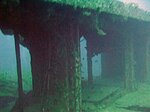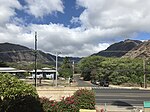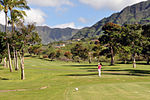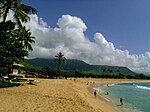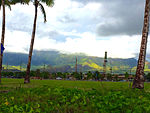Waianae High School
1957 establishments in HawaiiEducational institutions established in 1957Public high schools in Honolulu County, HawaiiUse mdy dates from October 2020

Waiʻanae High School is a public, coeducational secondary school in the City and County of Honolulu, Hawaii, United States, on the leeward (western) coast of the island of Oʻahu. The school about 40 miles (64 km) northwest of central Honolulu CDP. Waiʻanae High School is part of the Leeward School District, under the Hawaii State Department of Education.
Excerpt from the Wikipedia article Waianae High School (License: CC BY-SA 3.0, Authors, Images).Waianae High School
Farrington Highway,
Geographical coordinates (GPS) Address Nearby Places Show on map
Geographical coordinates (GPS)
| Latitude | Longitude |
|---|---|
| N 21.455173 ° | E -158.199925 ° |
Address
Farrington Highway (State Highway 93)
Farrington Highway
96792
Hawaii, United States
Open on Google Maps

